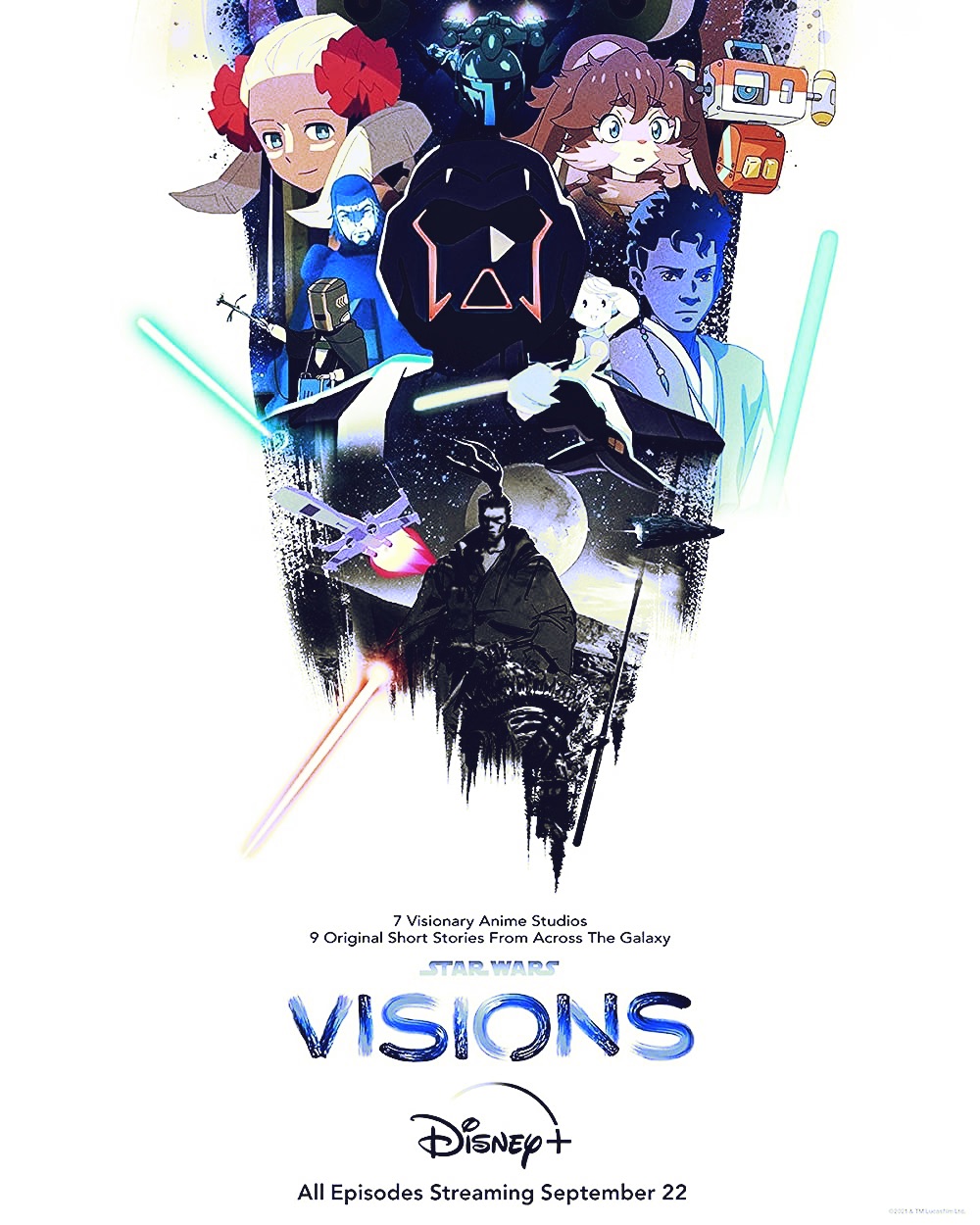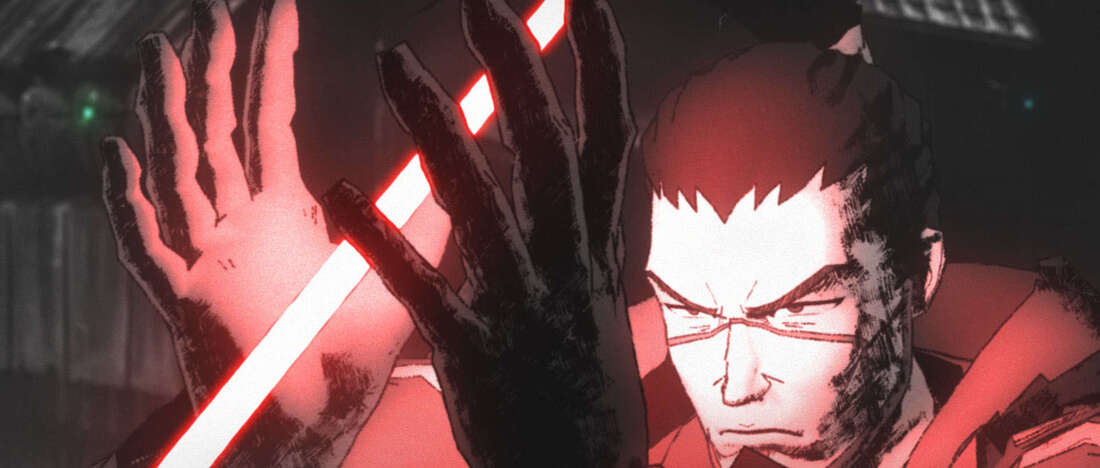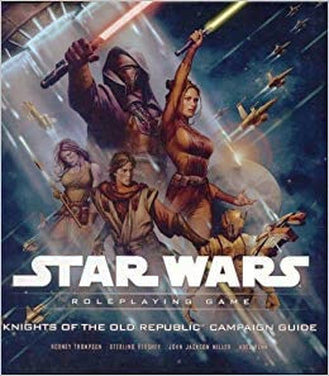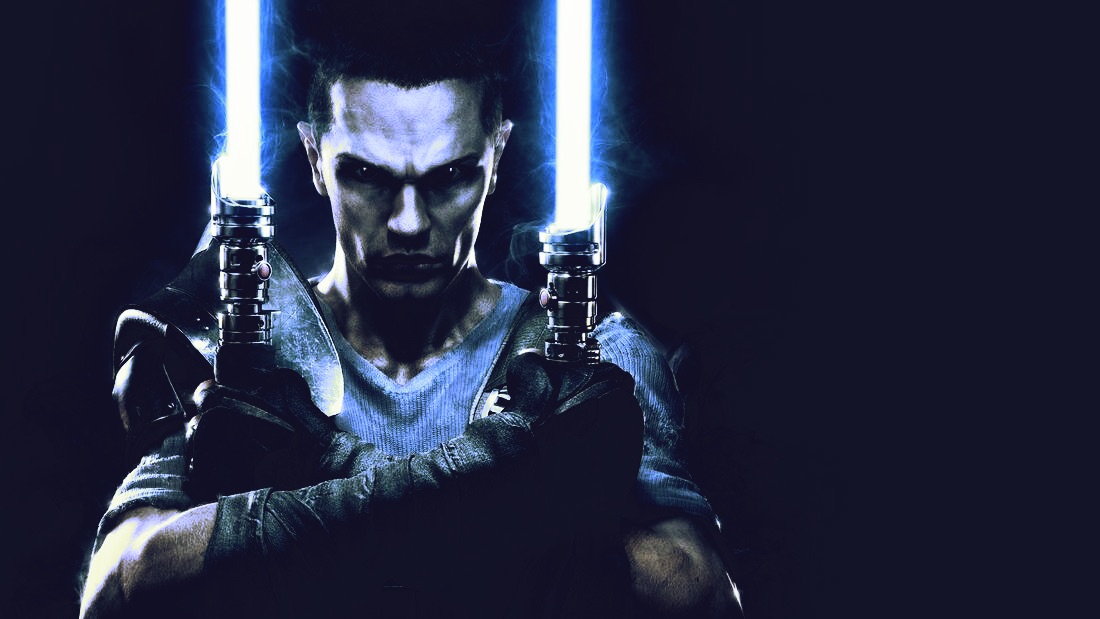|
Star Wars has no business being this good. With the critical miasma of divisive reviews flooding the airways after The Last Jedi and The Rise Of Skywalker (whatever your personal opinion), this franchise has been in desperate need of a new energy. ...Which is precisely what "Visions" provides. Where the franchise shines is in short vignettes; self-contained stories in a multitude of styles and directions. The Mandalorian made us love Star Wars again, and reinforced the idea that it was a world we wanted to explore outside of a main cinematic experience. This animated anthology is the next logical step in that exploration. When the Animatrix came out, Warner Bros. pulled out all the stops. They drew in absolute giants of the anime field; VISIONARY directors and animation studios, truly artful expressions and ideas - some directly linked to sequel bait, others just concentrated, intimate stories - that captured the atmosphere of the setting and respected its potential in storytelling. Star Wars: Visions is precisely this approach. Acclaimed directors and studios, some of the finest animators in the world, each striking their brush on this titanic canvas. The vignettes and snap-shot stories they produce play with concepts and ideas already expressed inside this universe, and stretch the boundaries of what becomes possible within each frame. In a word, these stories are BEAUTIFUL. Striking, kinetic, magnificent, and driven. It's worth noting that these tiny stories are considered non-canon, and I think that's freeing to the artists. No one has to worry about tying anything into anything, so creators can explore more deeply the vibrant and weird of their own interpretations. And things certainly get WEIRD. They also get mega badass. From the first vignette (The Duel), you know you're in for something special. An artistic style thrown back into the realms of the Seven Samurai - black and white cell-shades where the only color is electronics and the glow of a lightsaber; I was ENTHRALLED. Based on visuals, I actually expected the violence to be a bit more brutal, but it's Disney+, so we ain't getting that here. In fact, if I may, some of our stories DID suffer from their "stream-ability". Each episode is about 24 minutes long, and while some stories filled that time easily, many others carried with them a strange sense of FILLER. It makes me think on Disney's first and second season of Short Cuts - 90-second short films by a menagerie of directors and artists within Disney's animation teams. So much story-driven information had to be conveyed in such a short time and even some of those felt too long, or not long enough. Restriction breeds creativity, yes, but when you have MORE MONEY THAN GOD, maybe you could stretch some of those bindings; give time where it is needed and trim it where it is not. Finer PointsLightsabers Work CorrectlyThough the nine stories have a dread fascination with Jedi (I mean, seriously, could somebody just NOT be force-sensitive for once?), they definitely understand how a lightsaber is supposed to work. Blades slice through metal and stone, clash against each other, pierce through armor, and cut through droids like paper. Each short sets up its expectations, and stays consistent in the rules of the world (unlike Kenobi, that is - marvel as the old Jedi Master swings a lightsaber like a bat and it BOUNCES OFF stormtrooper armor, but then it deflects blaster fire and THAT pierces trooper armor; not to mention that sabers can easily pierce through blast doors...rant subsided for now). This anthology plants a highly specific, binding seed of specific knowledge across every vignette: Crystals - the essential component of any lightsaber, each with their own colors and qualities - apparently denote the morality of their wielder. In terms of lore canon, this ALMOST fits. Each crystal is supposed to have a different color; every game, novel, and comic confirms this. With over 60 to choose from, there are a lot of possibilities, and though each had mechanical benefits, ANY could be used to construct the blade due to the versatility and elegance of a lightsaber's design. However, to my knowledge and research, no mined crystal produces a red beam; red was built from a SYNTHETIC mock-up of a crystal. Something to save on cost and overclock power. In recent lore, it is posited that the energies of the Dark Side corrupt and disfigure a crystal within the hilt, turning it red. Every Sith villain in the canon rocks that red lightsaber, yet we don't see any corruption take place (something I'd LOVE to see, or the inverse of a redeemed Sith); often they just get a new one and it's red. In Visions, each of the nine stories holds to a purer idea: the Crystal reveals the true nature of its wielder. It is the narrative's lie detector. Somebody's all kind and cool? Oops, their blade is red! This person's kind of a jerk? Except their blade is green, so they must be a double agent! It's a color wheel of morality, and it is utilized in some fun ways. Not sure if it's a little too "on-the-nose" though, at least moving forward. For Disney, it's a device to clearly illustrate who we're rooting for in a dance of robes and lasers, but for me, an adult, I might be craving a little more nuance. Like I said at the start, THIS IS NOT CANON, so let's go a little crazy. Let's go deeper, ask some bigger questions! Not everything needs to be so black and white, or red and blue/green/yellow/purple/orange/white. (next blog I'm going to don my nerd glasses and go deeper on this whole blade color thing...) Stylized StoriesEvery story here is DRIPPING with iconic style. The animation studios pulled out all the stops to craft a memorable work of art. So you're not here all day reading about me gushing on this, I'd like to talk briefly about each one: 1. The Duel - set in an alternative timeline reminiscent of feudal Japan, a Ronin comes to the aid of a village ravaged by bandits. "Vintage" black and white cgi where color pops through lasers and electronics, this is a masterclass in shading, light, and taking your time to build tension. Fun fact: this one is so good that it's getting its own graphic novel and full comic series! 2. Tatooine Rhapsody - during the Clone Wars, a Padawan becomes a rock star in a world run by dangerous Hutts. Frenetic and energized animation, injecting some vibrant comedy after that first episode. Not gonna' lie, I wasn't engaged with this one on the first go around; maybe it felt like whiplash from The Duel, or maybe it was little too juvenile for my tastes. A second viewing did better. 3. The Twins - in the remnants of the Empire after The Rise Of Skywalker, two force prodigies battle over the decision to annihilate a planet. This one was WILD. Reminded me a lot shonen anime battles; the over-the-top Naruto fights with huge powers and pregnant pauses. Anyone who has played The Unleashed games will feel right at home with how much power is displayed on screen here - they're fighting IN SPACE, on top of a Star Destroyer. It's pretty nuts. Pay attention to this short's use of color and quick framerate, but be prepared for a substantial suspension of disbelief. Can't explain it? The Force did it! 4. The Village Bride - years after Order 66, a Padawan travels to a distant planet and comes to the aid of a village ravaged by bandits. This one felt powerfully grounded, animation simple and efficient. A coming of age story and another samurai vibe. 5. The Ninth Jedi - many generations after the fall of the Jedi, an old master invites seven Jedi to his temple to receive lightsabers whose design has been lost to time; buy spies are everywhere and not everything is as it seems. ...This one is my favorite; it's clean, powerful, intense, and has a healthy number of twists. Plus, and it's worth noting that the fight choreography has been great so far, but boy did I NOTICE it in this one. I don't want to spoil, but it's real good. If you skip the rest of the series, watch this one at least! 6. T0-B1 - A cybernetic boy, who dreams of being a Jedi, discovers a dangerous truth about his creator. Gotta' be honest, I didn't like this one as much. The art style has that Astroboy vibe, and overall brings some interesting concepts to life (it is quite cute). I suppose after all these serious stories, it's nice to get a little kiddy. Just not my mood (could be yours!). 7. The Elder - A Jedi and his Padawan pursue a dark and powerful presence. Cut and dry Sith hunt; great tension, cool animation, straight-forward (style reminds me a lot of Avatar: The Last Airbender). 8. Lop and Ocho - A family is torn about what to do when the Empire encroaches on their planet. This one features an unnamed race in the character Lop, a bunny-like fursona adopted into a humanoid family. When the Empire colonize the planet and recruit, the two sisters come to an impasse and clash over the independence of their business. Raises some neat questions about the families stuck in the trenches and makes this feel like a military occupation - like a war - and in war, there are consequences. 9. Akakiri - A Jedi returns to his forbidden love to help defend her kingdom from a Sith-like Shogun. Animation style takes some getting used to and it certainly stands out. Feels like a western wrapped up in sushi platter with a dash of True Grit with a twist; shaken, not stirred. It wasn't what I expected, and was definitely memorable. PossibilityThese stories were made through a love of Star Wars, simple and powerful. They began to push the boundaries of storytelling, and open the setting to fans young and old, which is EXACTLY what Disney needs. To explore droids as Jedi, expanding the racial lexicon of characters, redefining a force-user, and diving deeper into paths of darkness, death, and redemption.
Glad we're getting a Season 2. I'll keep holding out hope for a story about a regular Joe and Jill in this universe. May The Force Be With You All. -Adamus
0 Comments
Hey everyone! I took April off to do some birthday cleaning, figuratively and literally. Those of you that follow me on social media know I just completed an online "garage sale" / 10-year purge recently, and the energy that such an endeavor released has been monumental. It's amazing how much clutter we allow into our lives, and how many things we hold onto that weigh us down. Enough. Is. Enough. I feel lighter, stronger, and more motivated than ever. Here's to my next year. :) It was only just May the 4th, and any nerd worth her salt knows what's up. It seemed a no-brainer for me to run a very special kind of game, and in preparing it, and running it last night, I've made a few key observations on how it's changed over the years, how my style has changed, and how I prefer to run my games in this system. Saga Is The Best Version, don't @ meI've played the original D20 Star Wars (where Jedis are broken beyond reason), the West End variations (very open and creative), and the most recent Age Of Rebellion and all its various extra settings (weird dice and conceptual misalignment, still good, just weird). But what I've always returned to is Saga Edition. Star Wars as a property has a problem when it comes to their tabletop settings and systems. They don't maintain support on older systems, actively discarding and going out of their way to forget they even existed. Everything's out of print (or hundreds of dollars), resources are fan-made only (well done, chaps), and everyone pushes the new stuff down your throat. Now, I understand a business model where you have to push the new products out...but Saga was SO GOOD. I don't want your new edition with new rules and weird dice; nothing was broken, so why fix it? But WHY is Saga so good? Well, it took the best of the giants at the time, Pathfinder and 4th Edition D&D. Now, the latter was getting panned, and the former heavy on the rules with lots of floating modifiers, conditional effects, and active rolling. We've talked about this already. But Saga took some of that weight and just made it static. You have Defenses, not bonuses. You use skill checks in combat, and numbers aren't *as insane. Let's get into it. DefensesThere's no AC in this game. Instead, enemies will be targeting one of three static defenses: Fortitude - your constitution and strength to resist poison and getting thrown around, Reflex - your dexterity and ability to dodge, feint, or parry, Will - your mental clarity and focus. Now, in Pathfinder, these numbers would be bonuses to opposed checks against a Difficulty Class etc... But Saga takes a page from 4th Edition and keeps these numbers as static defenses. These are the numbers your enemies and you roll against to hit them and cause damage and debilitating effects, which is much faster and cleaner. Perception and Initiative can be treated as static as well (rolling in a clear "passive Perception"), but my players prefer rolling for Initiative for familiarity and that possibility of striking first. Rolling with crazy bonuses IS fun, don't take them all away! SkillsIn 5th Edition, there's a proficiency bonus that increases every few levels; in Pathfinder, you've got skill ranks - points you distribute each level to offset your weaknesses and augment your strengths. In Saga, you get an automatic bonus of 1/2 your total level rounded down automatically added to ALL OF YOUR SKILLS. Then, like most systems, the appropriate attribute modifier is applied, maybe you've got a training bonus (+5), and that's it. Most of what you "distribute" by selection is done at character creation. After that, the numbers take care of themselves. Feats and TalentsThe bread and butter of Saga Edition is found in their Talent Trees and Bonus Feats. Let me explain. There are only 5 Heroic Classes to play in the game. Jedi - Noble - Scoundrel - Scout - Soldier But each of these Classes has *at least* three different Talent Trees, and each class is awarded a Talent selection every odd level in the Class. These Talents can give passive or active bonuses, special powers, penalty removals...tons of cool stuff, and it's all very straightforward in how it operates (again, going back to targeting one of those three Defenses, or offering an easy bonus/alternative combat choice). Some Talents require others in order to be taken (Talent "chaining"), but it's never too alarming; the connections make sense and are easy to do. And Talents fulfill other requirements later, like Prestige Classes (Bounty Hunter, Jedi Knight, Ace Pilot, etc.), but you can always take levels in another class to gain access to another Talent Tree. Multiclassing is fully supported and encouraged because, at the end of the day, your character ISN'T just a Noble, or just a Jedi, they're a complete person with various skills and, ha, talents. Leia may have started as a Noble, but lord knows she has Talent with a blaster and we KNOW she's force sensitive. There are no "capstone abilities" in each class, just an ever-expanding web of Talents. Now, Feats suffer the same problem they do in Pathfinder, but instead of 2000+ of them... We're under 75 easy. And so many of them streamline the choice down to the player. Take Power Attack, a Pathfinder staple, for example: trade melee attack bonus for damage. Except, the player chooses how much to take away every time. I want to deal an extra 10 damage? Take a -10 to the roll. Only 5 damage? Take a -5. You choose the level of risk; that's an interesting choice, and we don't need compounding Feats to work through that. Feats exist to help specialize the player, each class offering Bonus Feats at ever even level in a Class from a select list that makes sense. On top of this, each character gets a Feat from the big list at 1st, 3rd, 6th, 9th, 12th, 15th, and 18th level...but the amount of required chaining is either nonexistent, or only 2 or 3 in, and the bonuses along the way make sense. Yes, using a lot of Feats take some getting used to when you come from 5E, but at least this system flows a lot easier and is much simpler to digest. And since I come from the other end, I'm happy to teach the transition. :) The Force and DestinyThe Force operates in two big ways in Saga: in the form of Force Points (a D6 added to a roll) and Force Powers. Jedi and other Force users collect powers in their Force Power Suite to wield within the world, slowly expanding the suite as they take Force Training (a Feat taken multiple times, based on your Wisdom).
Now, as per Raw, the Powers you have count as one use of said power, and this is where I split from RAW and flow toward my own preferences. + The Powers in your suite are treated like spells known and prepared. It tracks that a Force user that uses a Force Push would be able to push multiple times; they wouldn't forget how just because they already did it once. + Some Powers require the use of Force Points to work, while others can be augmented by the Force (using points), but most don't require burning them. Your pool only increases and replenishes every LEVEL, so no. + Most Powers take a Swift action in combat. I've seen Obi-Wan swing a lightsaber and shove a stack of droids in the same turn, so you guys can do it too. Force Lightning, on the other hand, may take a little more oomph in the action economy (unless you're a certain skill level in the Sith traditions). Destiny Points function much like inspiration, but I add a nice big D12 instead. It's not *just* a re-roll, it's a possible value (you pick how you want to use it). AND - Because my setting is in the Old Republic, when the Force is prevalent and surging, I added a mechanic to wonderful effect last night. Your Force dice and Destiny die can Ace. Acing is a mechanic utilized in games like Mekton, Deadlands, and the entirety of Savage Worlds (probably a ton of others, but those are the ones I know). Anywho, if you roll the max number on a die, you roll again and add the two values together (Ace again? Keep going and keep adding). And because you can add a Force die to anything, a punch to the face might send someone through a wall...and isn't that awesome? So, in short, Saga Edition functions like a streamlined D&D in space with laser swords and wizards. It was so good, and it reminded me why I liked this system so much and why I miss it so terribly. Get ready for a resurrection - we've got more stories to tell. See you at the table. -Adamus |
Adam SummererProfessional Game Master musician, music teacher, game designer, amateur bartender, and aspiring fiction author. Honestly, I write what I want when I want. Often monster lore, sometimes miniature showcases, and the occasional movie/show review.
Archives
April 2024
Categories
All
|




 RSS Feed
RSS Feed